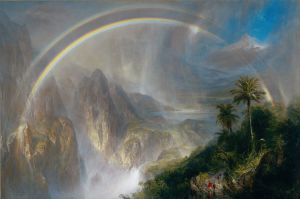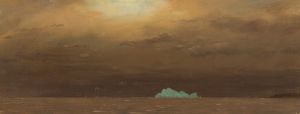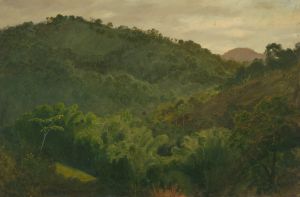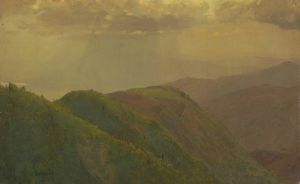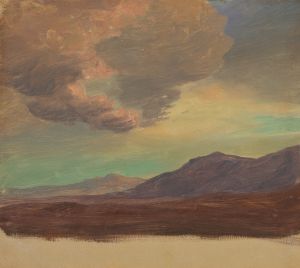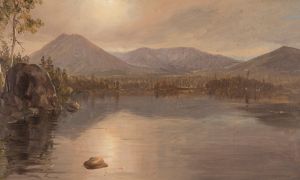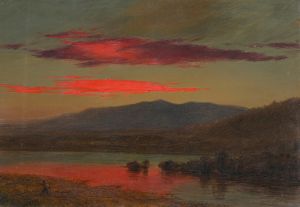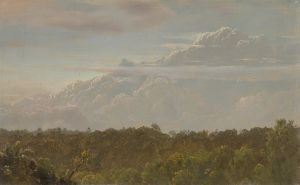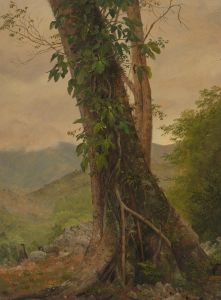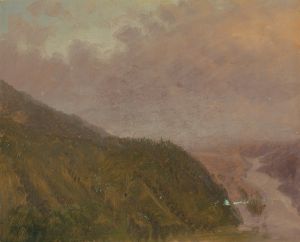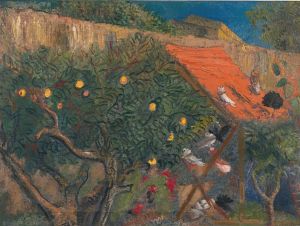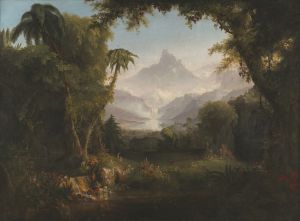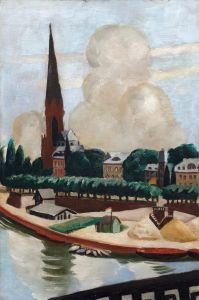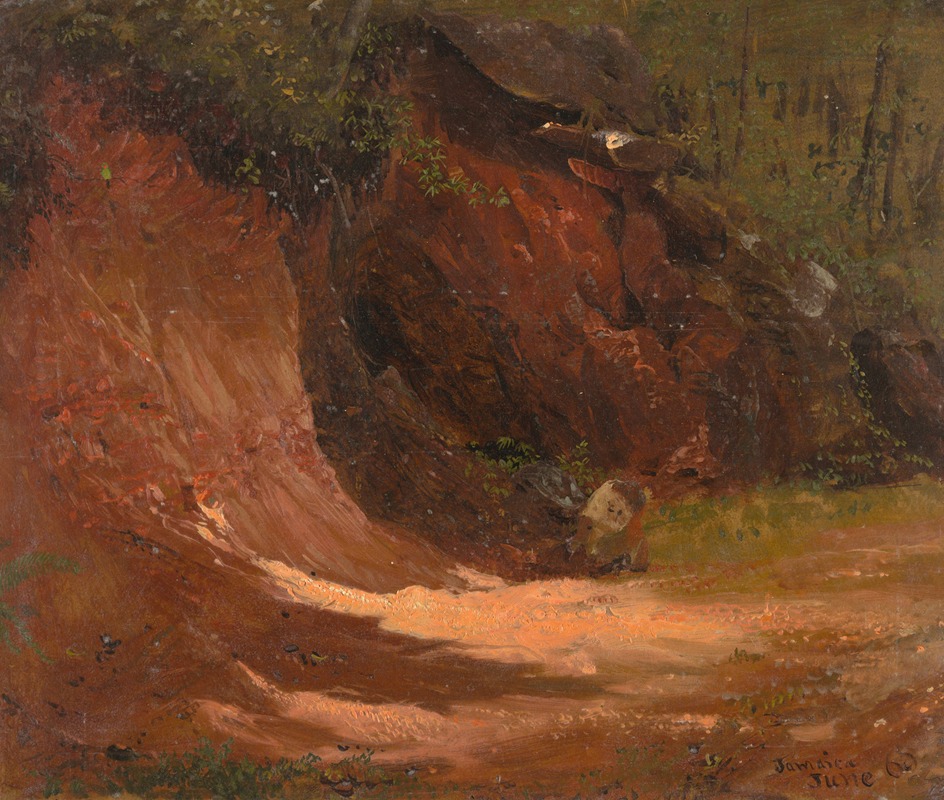
Woodland bank, Jamaica
A hand-painted replica of Frederic Edwin Church’s masterpiece Woodland bank, Jamaica, meticulously crafted by professional artists to capture the true essence of the original. Each piece is created with museum-quality canvas and rare mineral pigments, carefully painted by experienced artists with delicate brushstrokes and rich, layered colors to perfectly recreate the texture of the original artwork. Unlike machine-printed reproductions, this hand-painted version brings the painting to life, infused with the artist’s emotions and skill in every stroke. Whether for personal collection or home decoration, it instantly elevates the artistic atmosphere of any space.
"Woodland Bank, Jamaica" is a painting by the American landscape artist Frederic Edwin Church. Church, born in 1826, was a central figure in the Hudson River School, a mid-19th century American art movement known for its detailed, romantic portrayals of the American landscape. The Hudson River School artists were influenced by European Romanticism and sought to capture the sublime beauty of nature.
Frederic Edwin Church is renowned for his large-scale, highly detailed landscapes that often depict dramatic natural scenes. His works are characterized by their meticulous attention to detail, vibrant use of color, and the ability to convey the grandeur and majesty of the natural world. Church traveled extensively throughout his career, seeking inspiration from various landscapes around the world, including South America, the Arctic, and the Middle East.
"Woodland Bank, Jamaica" is one of Church's many works that reflect his fascination with exotic and tropical locales. The painting captures a lush, verdant scene in Jamaica, showcasing the island's rich vegetation and diverse plant life. Church's depiction of the Jamaican landscape is marked by his characteristic attention to detail and his ability to render the textures and colors of the natural environment with remarkable precision.
In "Woodland Bank, Jamaica," Church employs a composition that draws the viewer's eye into the depths of the forest, inviting them to explore the intricate interplay of light and shadow among the trees and foliage. The painting is a testament to Church's skill in capturing the essence of a place, transporting the viewer to the heart of the Jamaican wilderness.
Church's interest in Jamaica and other tropical regions was part of a broader trend among 19th-century artists and scientists who were fascinated by the biodiversity and exoticism of these areas. His works often reflect a sense of wonder and reverence for the natural world, and "Woodland Bank, Jamaica" is no exception. The painting not only showcases Church's technical prowess but also his deep appreciation for the beauty and complexity of nature.
Throughout his career, Frederic Edwin Church achieved significant acclaim and success. His paintings were highly sought after, and he became one of the most prominent landscape painters of his time. Today, Church's works are held in major museums and collections around the world, and he is remembered as a master of American landscape painting.
"Woodland Bank, Jamaica" exemplifies Church's ability to capture the spirit of a place through his art. The painting remains a valuable piece of his oeuvre, illustrating his dedication to exploring and depicting the natural world in all its diversity and splendor.





